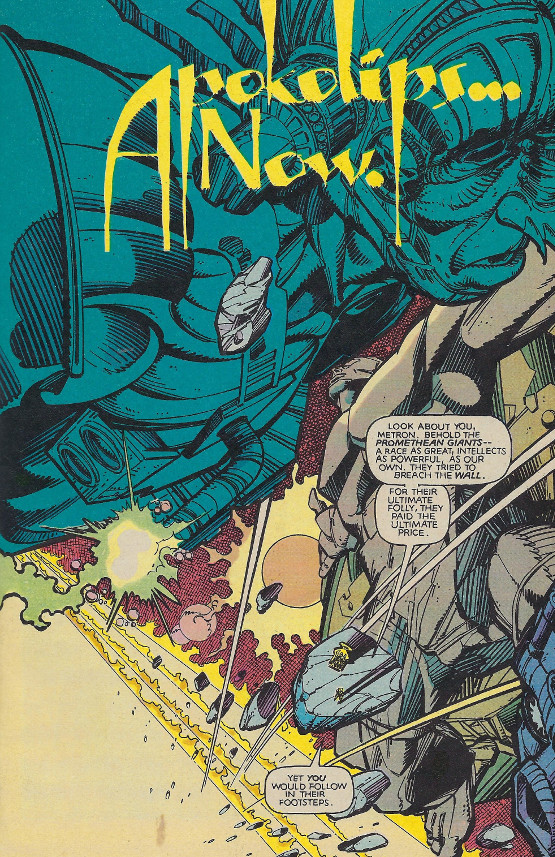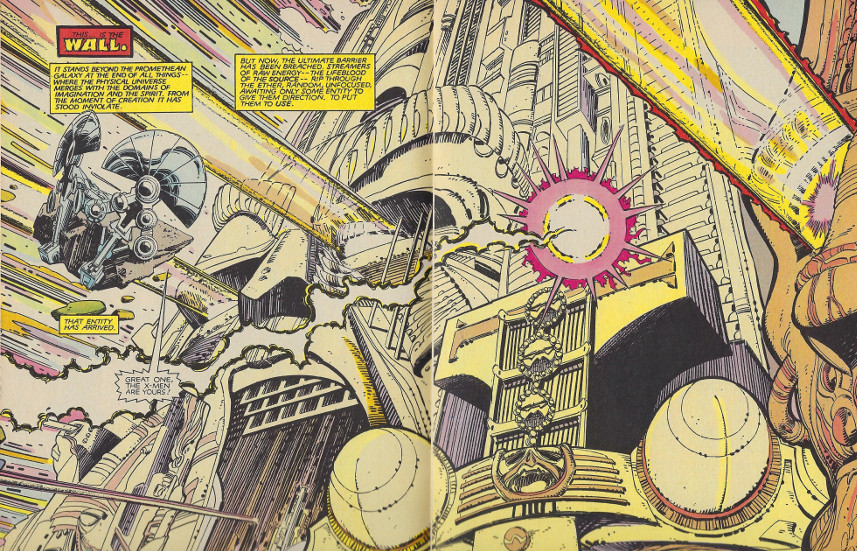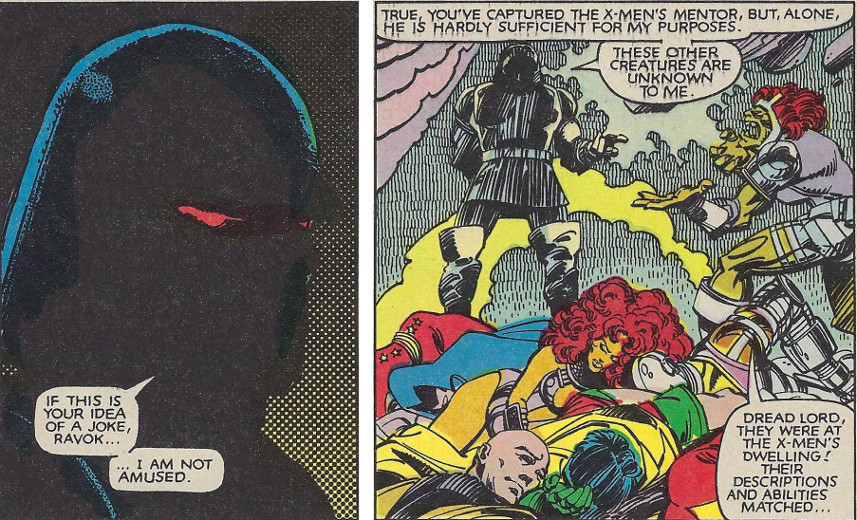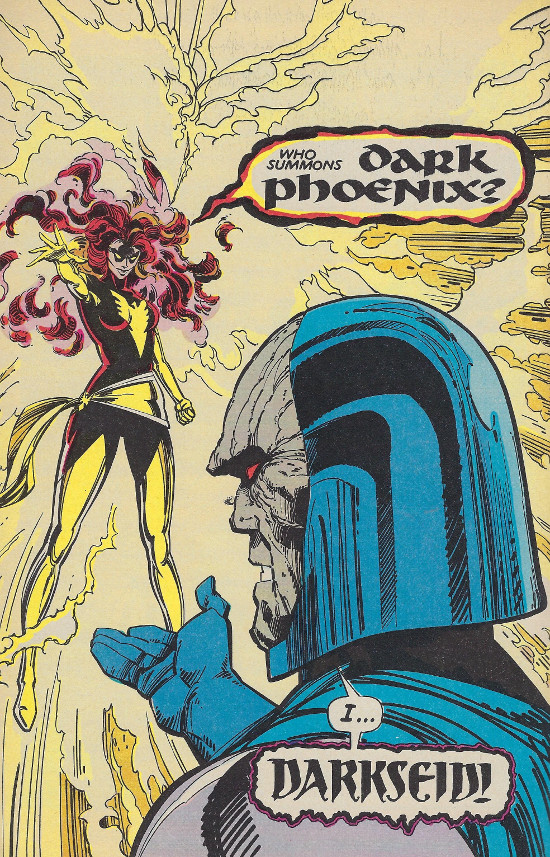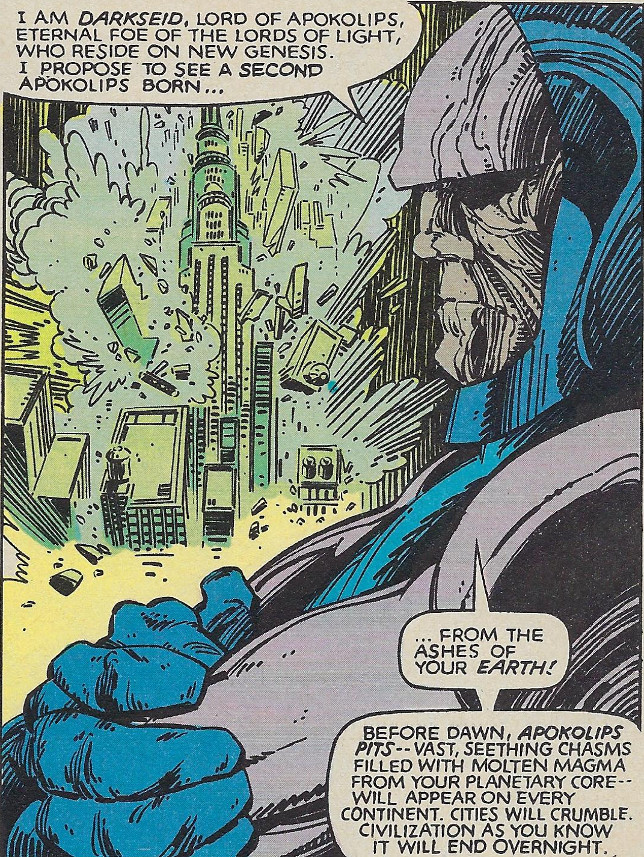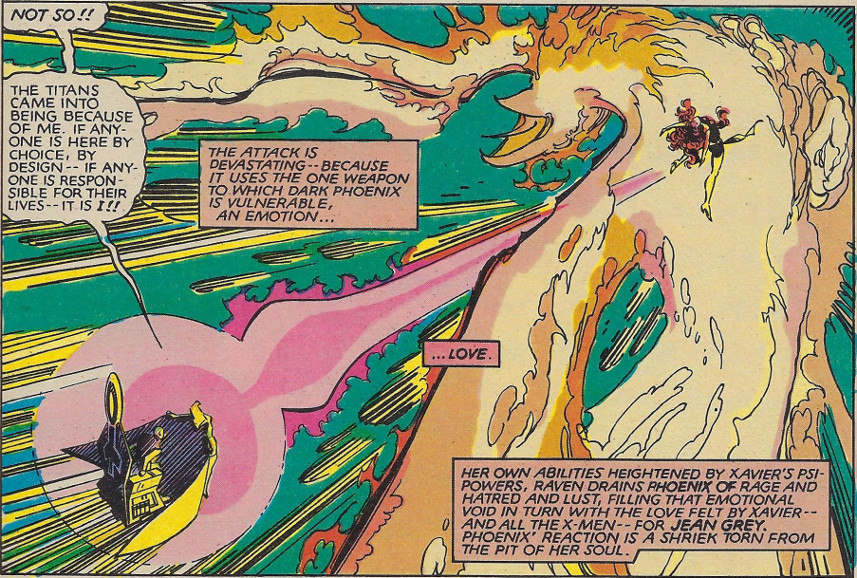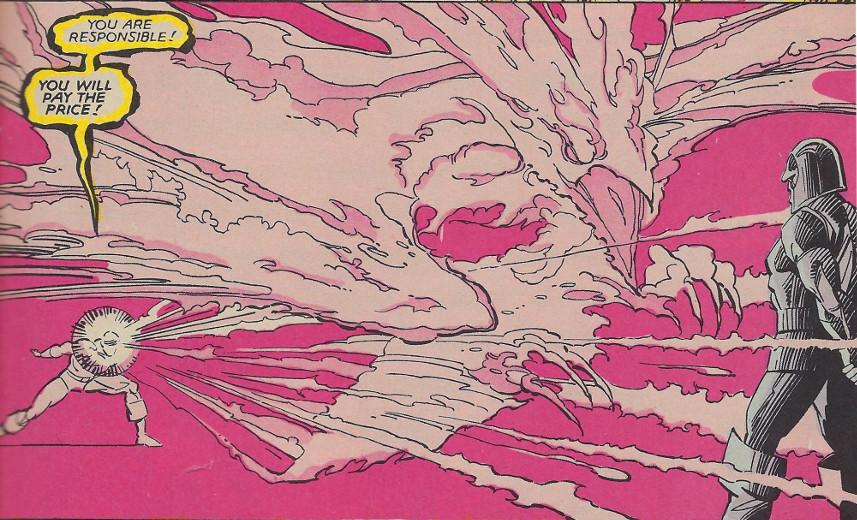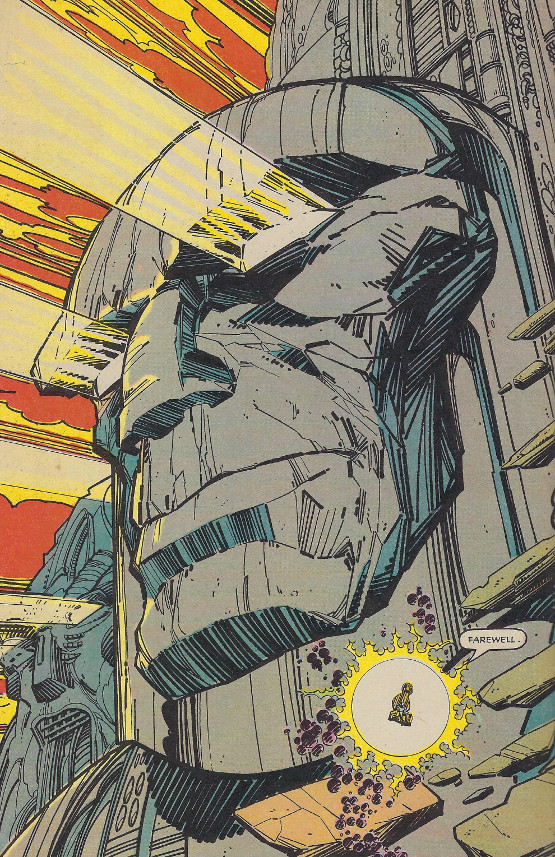A few columns back (Kirby’s Fourth World – The Dark Decade), I explored the attempted revival, climax, collapse, and seeming closure of Kirby’s grand experiment in storytelling in the decade leading up to 1985. Sadly, as was typical of Kirby, what started with a lot of promise had faded into stagnation, mainly due to the lack of a cohesive narrative by the King. While he was a powerhouse of ideas and images, diving into Kirby comic is more akin to visiting an art museum than it is to curling up with a good book – far more style than substance.
The strongest tales during this time frame, and indeed in the Fourth World up to this point, were provided by the Great Darkness Saga that ran in the pages of the Legion of Superheroes and the X-Men/Teen Titans crossover one-shot (entitled Marvel and DC Present the X-Men and the New Teen Titans), both from 1982. This column looks at that later gem.
Entitled simply and elegantly as Apokolips…Now, the creative team of Chris Claremont and Walt Simonson construct a beautifully moving tale with lots of eye candy to boot.
While it was natural to have a team up between the two hottest groups of super beings of the era, the X-Men and the Teen Titans, the real action is found in the interplay between each team with the foes they must stop at all costs – Darkseid and Dark Phoenix.
In his handling of the tale, Claremont shows a great deal on restraint in using the these two supremely powered entities. Dark Phoenix had already been killed in X-Men #137 (1980) in one of the most famous and poignant storylines to have ever come out of comics. Bring her back, in any form whatsoever required care in order to not dilute the emotional content of her death. In contrast, Darkseid, while sinister and powerful, was far less well known and his handling to date had made him more tyrannical rather than evil. Claremont’s portrayal of him as a cold, malicious, and unfeeling villain, bereft of any morsel of decency or redeeming characteristics transformed Darkseid from a common super-villain into one of the most horrific figures in comics.
The story starts at the Source Wall with an ignoble deal being transacted between Darkseid and that enigmatic New God, Metron.
Willing to make a deal with the devil for knowledge of what is beyond the wall, Metron gives Darkseid a device that collects residual psychic emanations from wherever they dwell. In return, Darkseid provides a device that allows Metron to pierce the wall and, in doing so, causes the power of the Source to being flowing into the universe.
Darkseid makes use of the device to literally rape the minds of the X-Men to gather the remnants he needs to reconstitute the Dark Phoenix
The collection of Phoenix residue triggers a nightmare in Raven, the resident psychic of the Teen Titans. As she discusses her vision with Starfire, Changeling (a.k.a Beast Boy for more modern audiences) attempts to provide substance to her vision by adopting the form she described; a move that is met with a dramatic response.
An apologetic Starfire in explaining her overreaction, reveals the story of Phoenix: of her destruction of the D’Bari star and the deaths of billions that resulted, her reported death at the hand of the Shiar, and her connection with the X-Men. Due to the universal threat posed by the Dark Phoenix, Starfire convinces the other Teen Titans to breach the X-Men’s home, unaware that the only occupant is Professor Xavier. Managing to overcome Professor X, the Teen Titans are themselves subdued shortly after by a group of parademons led by Ravok, who had been sent by Darkseid to kidnap the X-Men.
Meanwhile, the X-Men have been tracking down Darkseid’s field team, led by Deathstroke the Terminator, as they collect the residual energy signatures left behind by Phoenix. The X-Men manage to destroy the device used to extract the lingering psionic energy but their victory is short-lived and Deathstroke and his team quickly defeat and capture the X-Men.
Both of the field teams, with prisoners in toe, make their way to the Source Wall
where Darkseid waits. The visuals that Simonson creates of the Source Wall throughout the book but none are better done than the image above. The attention to detail and the subsequent inking and coloring make this two page spread easily one of the most arresting images in this book.
A triumphant Ravok returns to Darkseid only to see his glory evaporate as the dark lord points out his mistake.
The situation becomes even worse when Deathstroke’s team returns with the X-Men and it is revealed that Changeling was hidding, disguised as a green parademon. At this point, Darkseid decides on a permanent way of dealing with Ravok.
Throughout this whole sequence Claremont is having fun playing off of the physical similarities of the two teams, a criticism that was leveled against Teen Titans and one he might have shared. He also is establishing, with a light touch, the evil and sadistic nature of Darkseid.
Deciding two teams are better than one, Darkseid inserts the Teen Titans and the X-Men into a machine that combines the stolen Phoenix energy signatures with the raw power coming from the Source Wall. The result is the stunning rebirth of Dark Phoenix
who quickly embraces a partnership with Darkseid; a partnership where he is the cold, calculating brain and she is the fiery, passionate power. The two soon depart, leaving the X-Men and Teen Titans fettered and alone at the Source Wall. Of course, our heroes manage to free themselves and, finding Metron’s mobius chair, teleport back to Earth in hot pursuit of cosmic-powered Bonnie and Clyde.
Tracking the unique trail left behind by Dark Phoenix, the X-Men and Teen Titans soon have a second chance for victory when they finally confront them in a set of caverns beneath central park. Gloating that there is no way stopping his plan, Darkseid reveals that he has directed Dark Phoenix to send a bolt of here power towards the center of the Earth. His aim, as he explains, is to turn the Earth into a ne Apokolips:
Here Claremont is portraying Darkseid in a far more chilling and horrific way than he had been portrayed before. Willing to sacrifice billions for his dark dreams, no corruption beyond his reach, he seems to delight (if one could call it that) it his own sadism.
Realizing that they are overmatched, the X-Men and Teen Titans, nonetheless engage in a desparate struggle to stop armageddon. Professor X and Raven turn their attack to Phoenix directly, assualting her mind, soul, and, most of all, her emotions.
Their strategy proves effective, and, as the assault takes its toll Dark Phoenix begins to feel weak. Robin recognizes that, as a creature of passion, the Dark Phoenix is primarily driven by her desire for survivial and, exploiting her physical weakness, convinces her that she can save herself by absorbing the Phoenix bolt.
She complies, but by this time, the damage she’s sustained has been too much and, even with all of her energy now mustered within herself, she senses that she is doomed. In her last move, she attempts to bond with a human host and, due to her previous relationship and affinity, she chooses Cyclops. This move proves to be disasterous for Darkseid because once inside Scott’s mind, Dark Phoenix remembers her love for him and, in her last, act, she bursts forth, wreathed in his optic energy, and speeds straight for Darkseid, eager for revenge.
Gathering him up in her talons,
she carries him back to the Source Wall, hoping for her salvation and his retribution in one fell swoop.
In the epilog, we learn that status quo has been mostly restored. Earth is saved; the two teams go their separate way, and Metron, having successfully penetrated the Source Wall, has now returned. As the book closes, Claremont and Simonson treat us to the final visual as Metron wishes Darkseid, now immortalized beside the Prometheans as a piece of the wall, farewell.
All things considered, this tale has been one of the most successful storylines involving Kirby’s fourth world. Certainly, a degree of the success is due to Claremont’s writing and Simonson’s detailed and vibrant art but also because Darkseid was a back-drop to the stories and not the primary focus.


